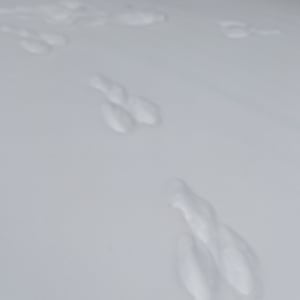
As I sit here, just beginning to write this week’s ‘Hike of the Week’, I’m serenaded by the songs of what sounds like at least a dozen birds. I just finished reading an article about mountain lions roaming through Boulder, and this morning on a quick adventure out in the woods came across some fresh coyote tracks. In case the haphazard oscillation between shorts and t-shirt weather, and 12 inch snow storms didn’t have you convinced, I can very positively claim that, yes, it is spring in the mountains!
Animals that have been hibernating all winter long, such as our resident black bears, are beginning to wake, migrating birds will slowly begin to return in the coming months, and wildlife in general is on the move. The heavy spring snows have pushed elk herds lower in the valley (in Minturn many of our trails and roads that normally open by now have remained closed due to elk) and their predators almost surely will follow.
One of the wonderful things about this time of year is that while wildlife is becoming more active by the day, we still have a healthy snowpack in the mountains. This means that for those of us who don’t mind the snowy trails, this is one of the best times of year to practice your tracking skills!
Tracking is also the perfect social distancing outdoors activity. It easily gets you off crowded trails and most of our resident wildlife (perhaps excluding the mountain goats) don’t spend their time “getting rad”, so there’s little chance you’ll find yourself following a squirrel up the Holy Cross Couloir and needing to call on Search & Rescue. To start your tracking journey, here are my suggestions.
First, dust off your old snow shoes, or slap your skins back on your backcountry skis, because it's easiest to track wildlife in the snow! Next, find a local snow-covered trail, or just head off into the woods behind your house. North facing trails, and anything above 8,000 feet, are likely to still have solid snowpacks. The Minturn Trails, Stone Creek or Eagle Vail Trail, or most trails out of Vail are great places to start. The best places to go tracking are adjacent to creeks or willowy-wetlands. These places serve as the ‘community center’ for wildlife, since everything needs water and the shrubby vegetation provides good spring forage for many herbivores.
Finally, get ready to leave the trail behind. You won’t need to go far. Find some tracks and let yourself follow them. The wildlife doesn’t limit itself to the confines of a packed trail, so why should you? Even if only for a minute or two, following the tracks you see will give you a unique perspective into what goes on in our wilderness day in and day out!
So, on that note, this week’s trail challenge is to find some wildlife tracks in your backyard or on a local trail (make sure they’re not just from your neighbors dog!). Snap a photo and share to instagram with the hashtag #wmsctrailchallenge (or email hike@walkingmountains.org) with your best guess of what critter you’re following out. Our naturalists here at walking mountains will look them over and help you identify what you see (and maybe share a few of the tracks you find!).







